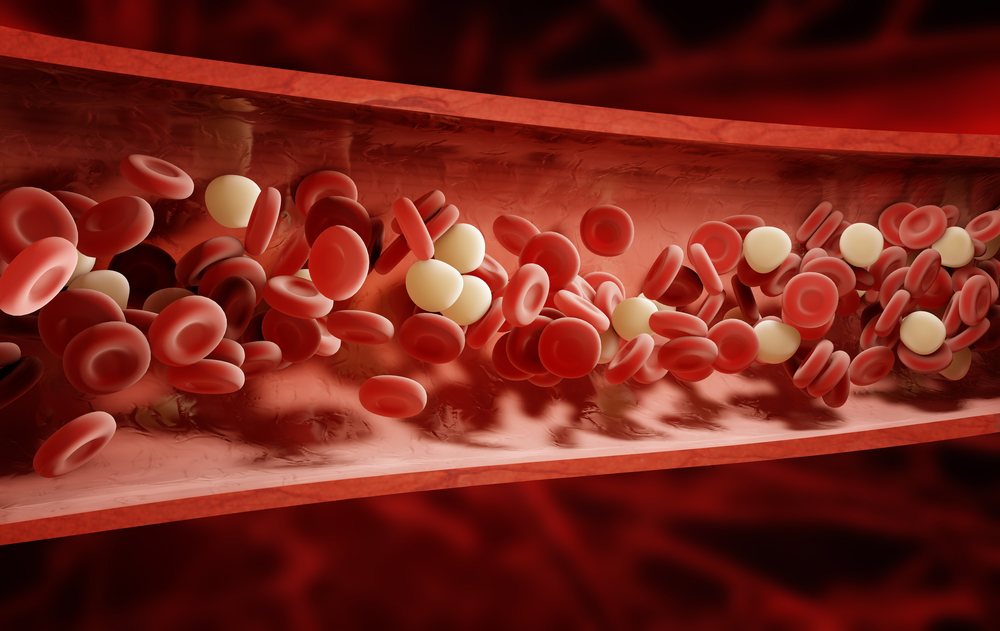Esperoct Highly Effective as Prophylaxis for Hemophilia A, Study Suggests

Severe hemophilia A patients using Esperoct (turoctocog alfa pegol) as a preventive treatment do well, with fewer bleeds or breakthrough bleeds, lower costs, and better life quality compared with other extended half-life (EHL) therapies, a modeling analysis suggested.
The analysis was published in the journal ClinicoEconomics and Outcomes Research, in the study, “Long-Term Outcomes of Previously Treated Adult and Adolescent Patients with Severe Hemophilia A Receiving Prophylaxis with Extended Half-Life FVIII Treatments: An Economic Analysis from a United Kingdom Perspective.”
Replacement therapy is a standard hemophilia A treatment that involves supplying factor VIII (FVIII), the blood clotting protein missing or defective in these patients.
FVIII replacement therapies can be used on-demand in response to a bleeding episode, or as prophylaxis to prevent bleeding, which has improved both life expectancy life quality in hemophilia patients.
Recently, EHL factor VIII concentrates have been developed to reduce dosing and infusion burden, leading to lower annual bleeding rates (ABRs). However, analysis of these newer therapies is lacking.
A researcher with the Northern Ireland Haemophilia Comprehensive Care Centre and Thrombosis Unit, in collaboration with scientists at Novo Nordisk and a modeling expert, developed a model to predict bleeding outcomes in adolescents and adults with hemophilia A being treated with various EHL therapies. The team focused on differences in total bleed episodes and bleed resolution, as well as costs.
To understand the association between FVIII levels and ABRs, data from the Pathfinder 2 Phase 3 clinical trial (NCT01480180) were used. This trial evaluated the efficacy of Esperoct (developed and marketed by Novo Nordisk) in preventing bleeds in previously treated patients 12 and older with severe hemophilia A.
Researchers built their models based on trial data, which included a pharmacodynamics (PD) model — to estimate the relationship between FVIII levels and annual bleeding rates — and a pharmacokinetics (PK) model to predict FVIII levels for all EHL treatments that included factors such as dose, the time a medicine stays in the body, time since dose, dosing interval, and the medicine’s distribution throughout the body.
“To the best of our knowledge, this is the first health economics analysis in hemophilia A to use PK data from a clinical study population to predict comparative ABRs across EHL FVIII products,” the scientists wrote.
Four EHL treatments were included to predict comparative bleeding rates: Esperoct, Adynovi (rurioctocog alfa pegol; Adynovate in the U.S.), Elocta (efmoroctocog alfa), and Jivi (damoctocog alfa pegol).
A final model estimated the impact of PD and PK modeling on the total number of bleeding episodes, total costs, and quality-adjusted life years (QALYs) — a measure of disease burden, including both quality and length of life, in which one QALY is equal to one year of perfect health.
Analysis of the total bleeding episodes per patient over a 70-year time frame showed that Esperoct’s use as prophylaxis resulted in the fewest traumatic, spontaneous, and joint bleeds of the four EHL treatments.
Prophylaxis with Esperoct was associated with a reduction of between 8% and 19% in total traumatic and spontaneous bleeds compared with the other therapies, and lower spontaneous bleeds by 6% to 11%.
In the cost analysis, FVIII prophylaxis accounted for the largest share (97%) of total costs, and the smallest percentage (0.67–0.68%) of resource use, which included costs due to consultation, hospital days, physiotherapist visits, X-ray, MRI, ultrasound, and coagulation tests.
Breakthrough bleed resolution costs totaled up to 2.7% of all costs. Annual prices for each EHL treatment were assumed to be the same.
Preventive use of Esperoct was found to have the lowest bleed resolution costs and the lowest resource use costs of all four EHL treatments. Compared with the others, the combined costs were 9–25% lower for Esperoct.
Prophylaxis with Esperoct was also associated with the most quality-adjusted life years, representing a QALY gain of 0.35 to 1.05 compared with other treatments. Adynovi resulted in the least QALYs.
A final analysis was conducted to model bleeds, costs, and QALYs comparing low and high dosing regimens.
In the low-dose scenario, Esperoct prophylaxis led to the fewest cumulative bleeding episodes, reflecting a reduction in bleeds of between 13% and 50% than the others, as well as a QALY gain of between 0.65 and 2.56. Esperoct prophylaxis was also associated with the highest total costs here.
In a high-dose regimen, prophylaxis with Elocta resulted in the fewest cumulative bleeds, with 12% fewer bleeding episodes than Esperoct. In turn, Esperoct resulted in 7% fewer cumulative bleeds and a QALY gain of 0.32 compared with Adynovi, and 11% fewer cumulative bleeds and a QALY gain of 0.55 compared with Jivi. In this scenario, Esperoct prophylaxis was also associated with the lowest total costs.
Overall, “prophylaxis with [Esperoct] resulted in the fewest cumulative bleeds, lowest breakthrough bleed resolution and resource costs, and most QALYs of the EHL FVIII treatments modelled,” the researchers wrote.
Novo Nordisk fully funded this analysis.






